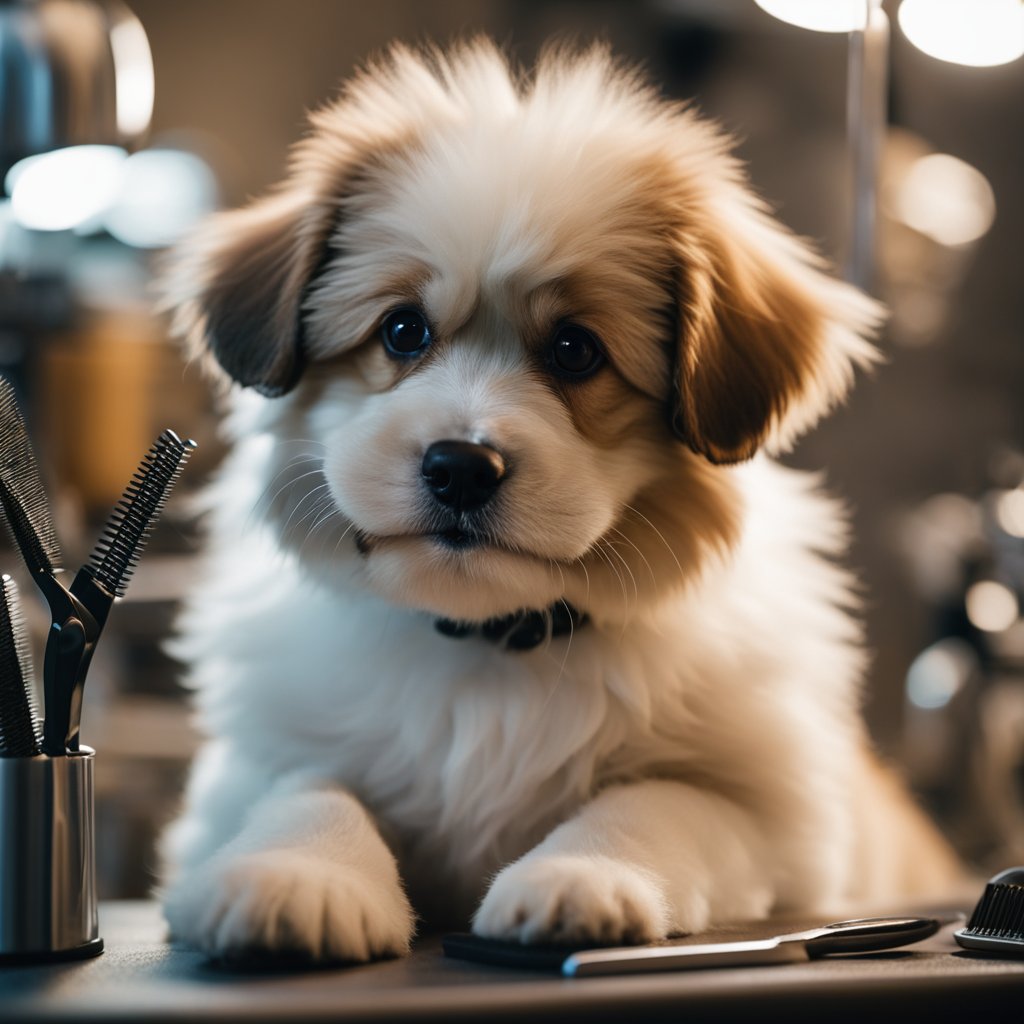When to Introduce Your Puppy to Grooming: Expert Advice
Introducing a puppy to grooming is an important part of their overall care. Grooming not only helps to keep your puppy clean and healthy, but it also helps to build a strong bond between you and your furry friend. However, it’s important to introduce your puppy to grooming at the right time to ensure that the experience is positive and stress-free for both of you.
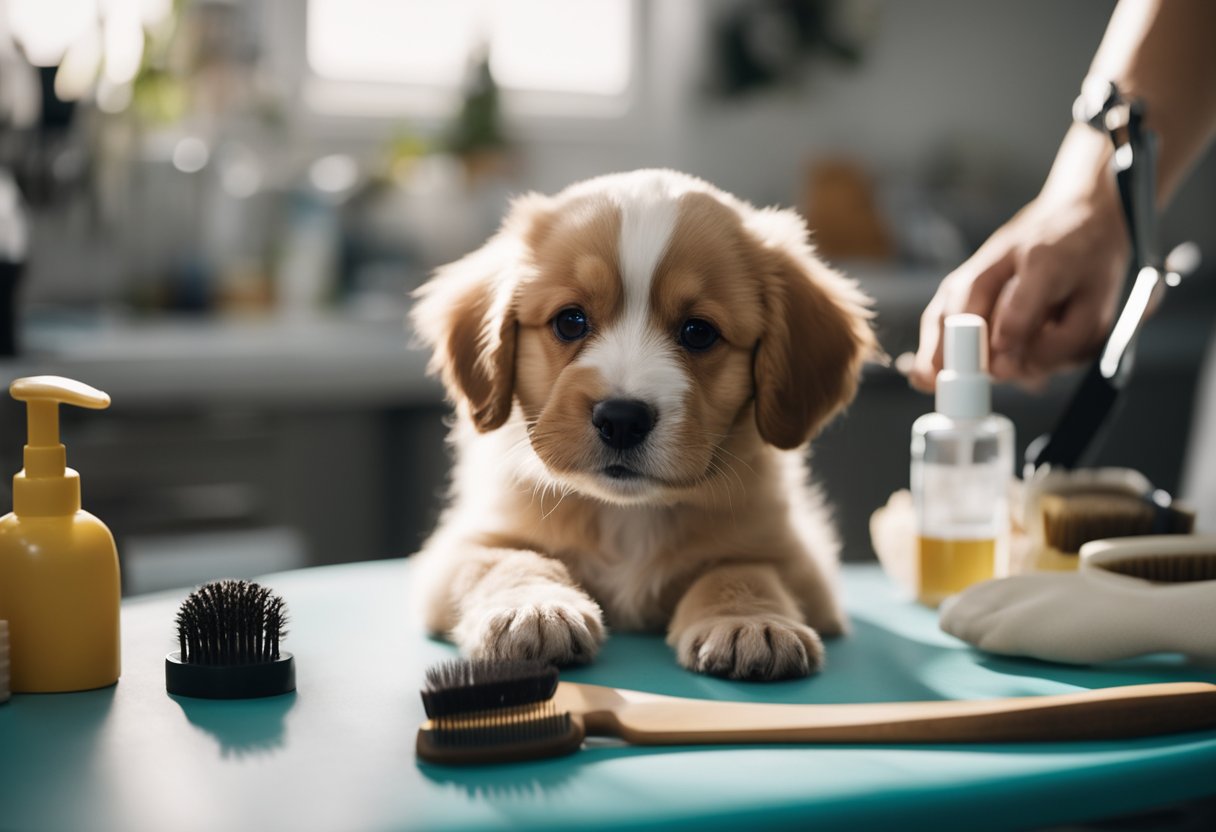
Determining the right time for grooming your puppy can depend on a few factors. Generally, it’s recommended to start grooming your puppy as early as possible to get them used to the process. However, you should wait until your puppy is at least 8 weeks old before giving them their first bath. This is because puppies younger than 8 weeks old are still developing their immune systems and may not be able to regulate their body temperature as well as older puppies.
Preparing your puppy for grooming is also an important step in the process. You should start by getting your puppy used to being handled and touched in different areas of their body. This can include touching their paws, ears, and tail. You can also use treats and positive reinforcement to help your puppy feel more comfortable during grooming. By taking these steps, you can help ensure that your puppy has a positive experience during grooming and that they are comfortable with the process.
Key Takeaways
- Introducing your puppy to grooming is an important part of their overall care.
- The right time to introduce your puppy to grooming can depend on their age and other factors.
- Preparing your puppy for grooming can help ensure a positive experience for both you and your furry friend.
Determining the Right Time for Grooming
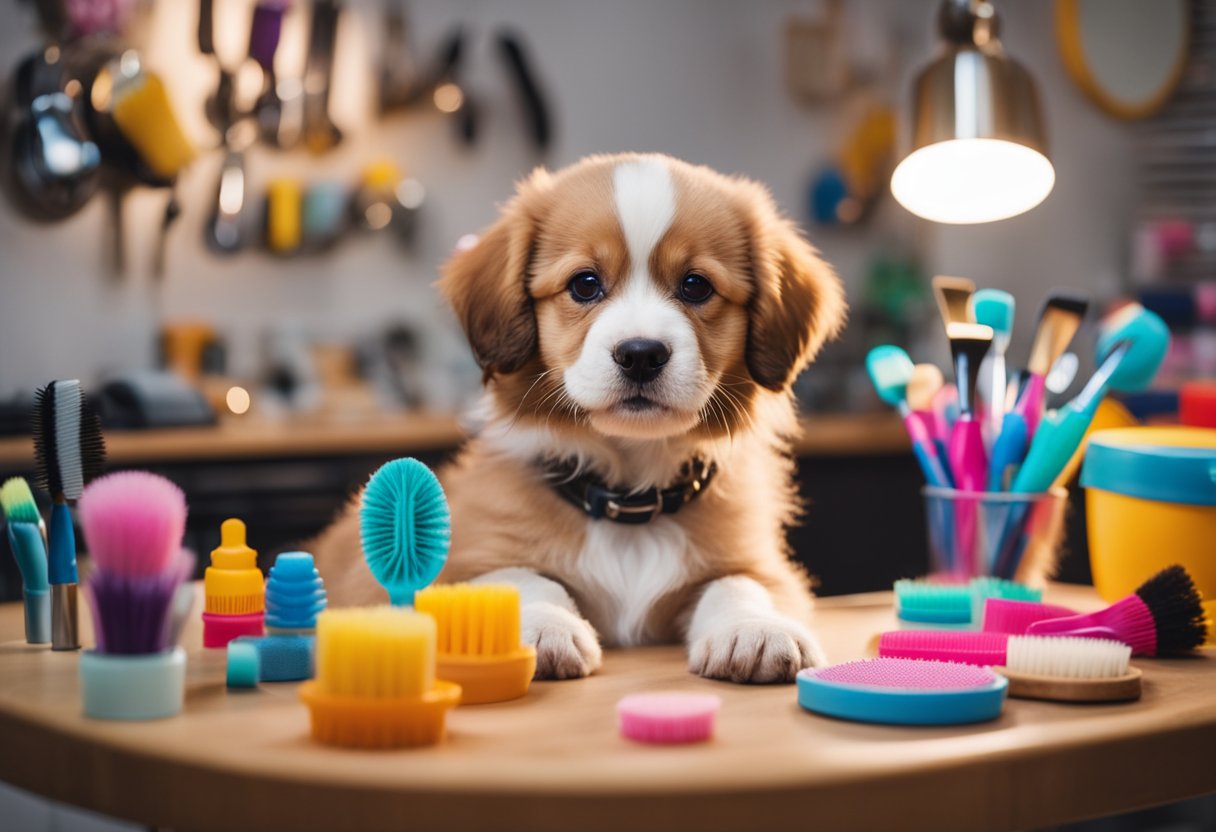
When it comes to grooming your puppy for the first time, there are a few things to consider. While it may be tempting to start grooming your puppy right away, it’s important to wait until they are ready. Here are some factors to consider when determining the right time for grooming.
Puppy Age Considerations
According to The Pet Journey, it’s best to start getting your puppy groomed at 10 to 12 weeks old. This will help your pup become accustomed to a grooming environment as young as possible. However, it’s important to wait until your puppy has completed both rounds of their vaccinations before they are taken to a groomer. This is to prevent them from getting sick or contracting any diseases.
Behavioral Readiness
Your puppy’s behavioral readiness is also an important factor to consider. According to Bark and Purr Grooming, if your puppy seems anxious or fearful during grooming, it’s best to stop and try again later. You can start by introducing your puppy to grooming tools and equipment gradually, allowing them to sniff, explore, and become familiar with the grooming environment. Positive reinforcement, such as praise and treats, can help puppies associate grooming with a positive experience.
In addition, it’s important to establish a grooming routine early on to maintain your puppy’s health and hygiene. You can start by brushing your puppy’s coat regularly to prevent matting and tangling. You can also trim their nails and clean their ears to prevent infections.
In conclusion, determining the right time for grooming your puppy involves considering their age and behavioral readiness. By starting early and introducing your puppy to grooming tools and equipment gradually, you can help them become comfortable with the grooming process and maintain their health and hygiene.
Preparing Your Puppy for Grooming
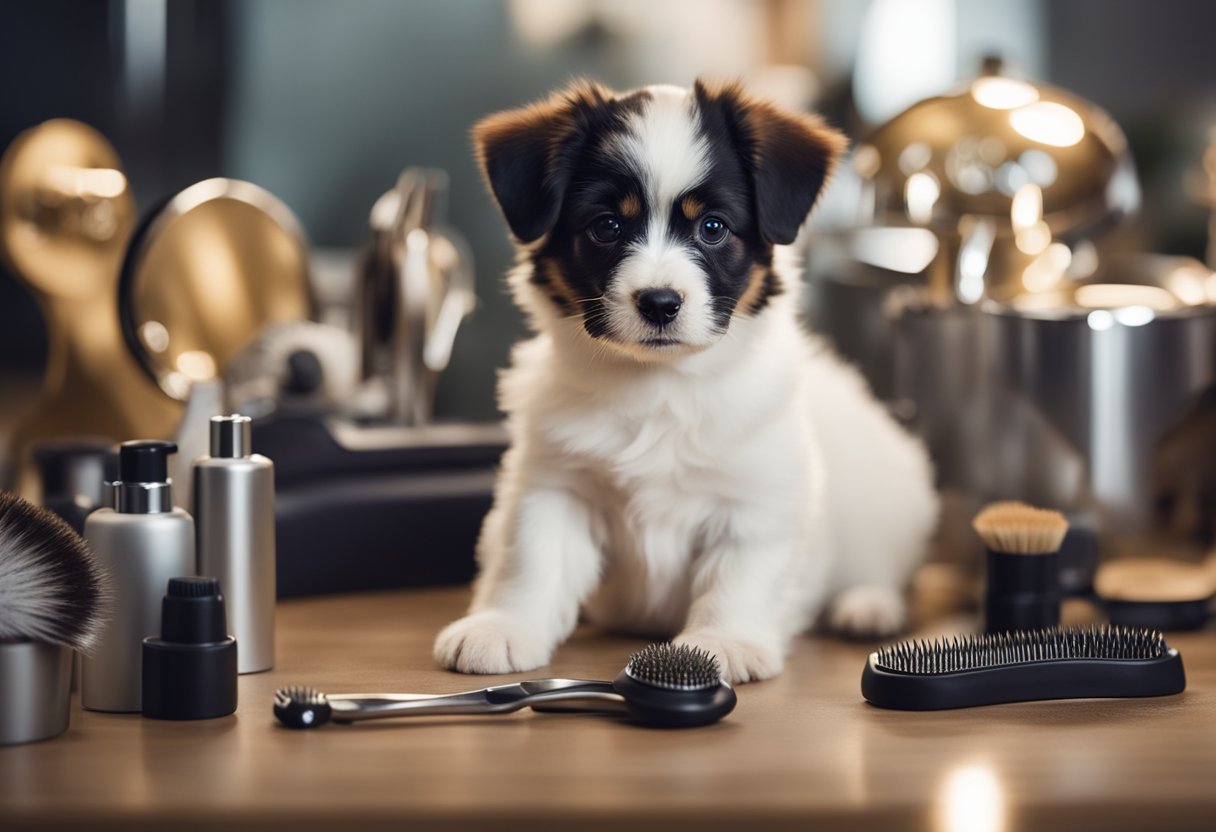
Grooming is an essential part of your puppy’s care routine. It helps keep your puppy clean, healthy, and happy. It is recommended to start grooming your puppy at an early age to get them used to the process. In this section, we will discuss how to prepare your puppy for grooming.
Introduction to Grooming Tools
Introducing your puppy to grooming tools is an essential step before starting the grooming process. It would be best if you familiarized your puppy with the tools that you will be using, such as a slicker brush, rake, pin brush, bristle brush, comb, and nail clippers that are designed for dogs. This will help them become familiar with what to expect when they visit the salon and keep certain essential parts of the process from being a surprise for them.
Start by showing your puppy the grooming tools and let them sniff them. Allow them to become familiar with the sensation of contact in these areas. Touch nails with the clippers before actually trying to cut them, and try the same with scissors on fur. After about five days of simple contact, you can slowly begin to do actual grooming tasks.
Creating a Positive Grooming Environment
Creating a positive grooming environment is crucial to your puppy’s grooming experience. It would be best if you made sure that your puppy is comfortable and relaxed before starting the grooming process. Choose a time when your pet seems calm and offer praise and treats throughout the process. If they seem overly anxious, end the grooming session and try again later.
Make sure that the grooming area is well-lit, quiet, and free from distractions. Keep the grooming area clean and organized, and use a non-slip mat to prevent your puppy from slipping. It would be best if you also used a grooming table to keep your puppy at a comfortable height and make it easier for you to groom them.
In conclusion, preparing your puppy for grooming is an essential step in keeping them healthy and happy. Introducing your puppy to grooming tools and creating a positive grooming environment will help make the grooming process a positive experience for both you and your puppy.
Resources
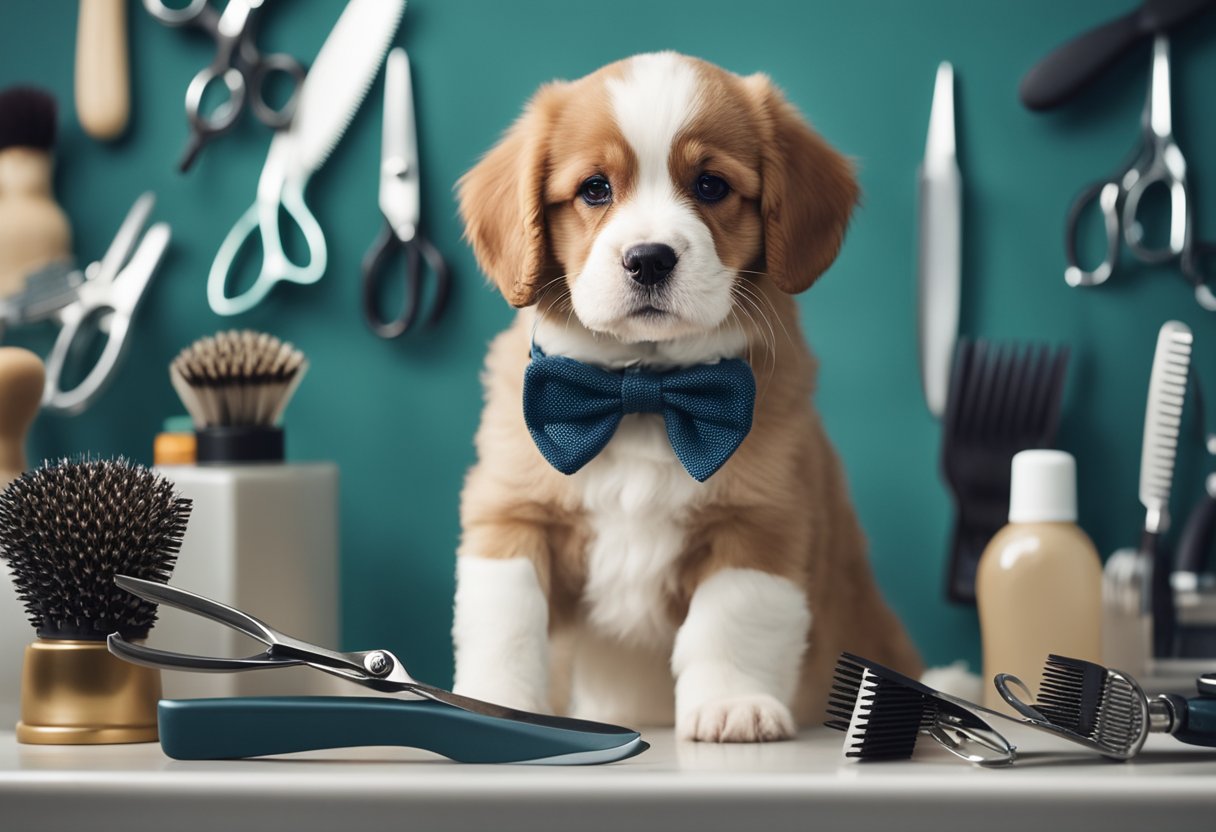
When it comes to introducing your puppy to grooming, there are many resources available to help you. Here are a few options to consider:
1. Professional Groomers
Professional groomers are a great resource for learning about puppy grooming. They have the expertise and experience to help you understand when and how to introduce your puppy to grooming. They can also provide guidance on what tools and products to use, and how to properly care for your puppy’s coat and skin. Search for a reputable professional groomer in your area and schedule a consultation to get started.
2. Online Guides and Videos
There are many online guides and videos available that can help you learn about puppy grooming. These resources can provide step-by-step instructions on how to groom your puppy, as well as tips and tricks for making the process easier and more enjoyable for both you and your puppy. Look for resources from reputable sources, such as pet care organizations or trusted pet bloggers.
3. Books and Magazines
Books and magazines are another great resource for learning about puppy grooming. They can provide in-depth information on grooming techniques, as well as advice on how to properly care for your puppy’s coat and skin. Look for books and magazines written by experts in the field of pet care, and consider joining a pet care book club or online community to connect with other pet owners and share tips and advice.
Remember, introducing your puppy to grooming is an important part of their overall health and well-being. By taking the time to learn about proper grooming techniques and care, you can help ensure that your puppy stays happy and healthy for years to come.
Conclusion
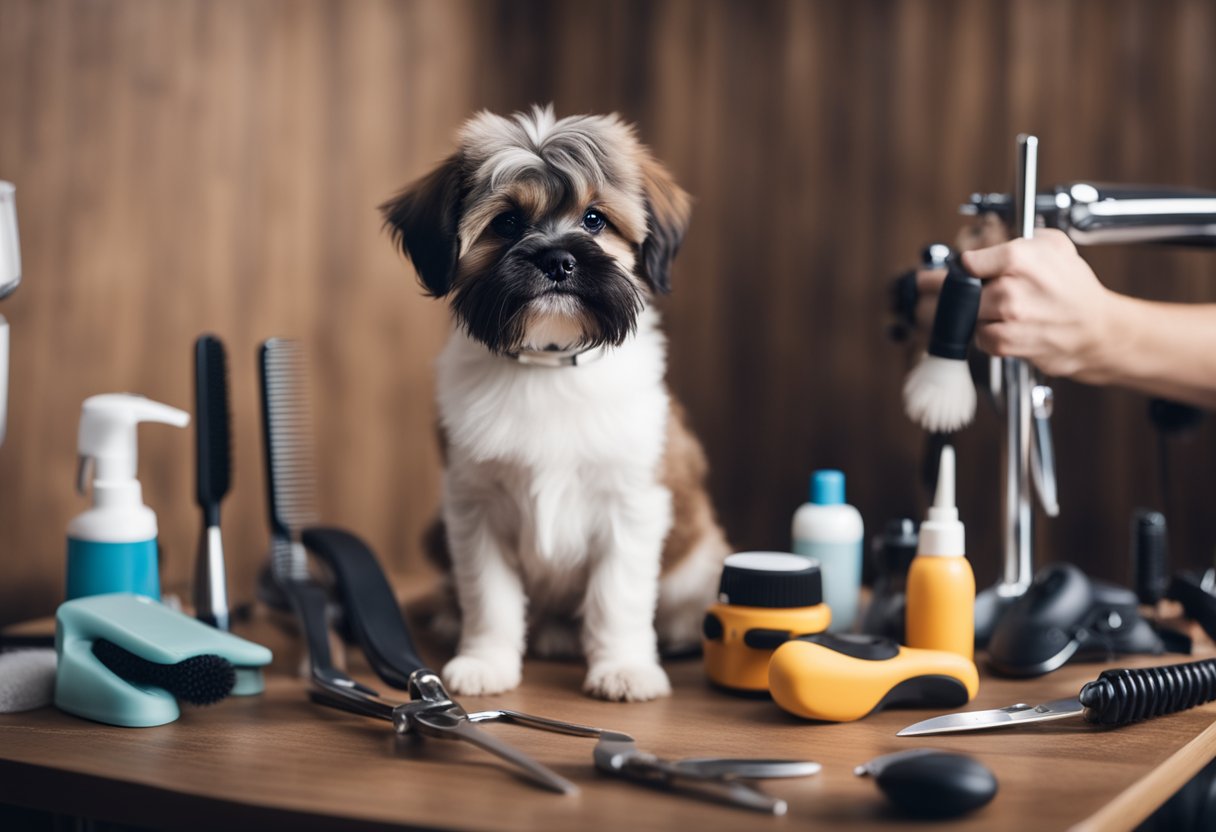
Introducing your puppy to grooming early on is crucial for their future grooming sessions. It helps them get used to being handled, which can make future experiences like vet visits go smoothly. Additionally, grooming allows you to inspect your puppy for any pests, bumps, scrapes, or health issues. This helps you catch any issues early on and ensures your pup stays healthy.
When deciding when to introduce your puppy to grooming, it’s important to consider their age, breed, and personality. Generally, it’s recommended to start grooming your puppy at around 12 weeks old. This allows them to get used to the process early on and establishes a positive association with grooming. However, if you have a breed that requires more frequent grooming, such as a poodle or a Maltese, you may need to start grooming them earlier.
It’s important to take things slow and be patient when introducing your puppy to grooming. Start by touching their paws and ears to get them used to being handled. Then, gradually introduce grooming tools like brushes and clippers. Reward your puppy with treats and praise to create a positive association with grooming.
Remember, every puppy is different, and it may take some time for your pup to get used to grooming. Be patient and consistent, and your puppy will soon learn to enjoy grooming sessions.
Frequently Asked Questions
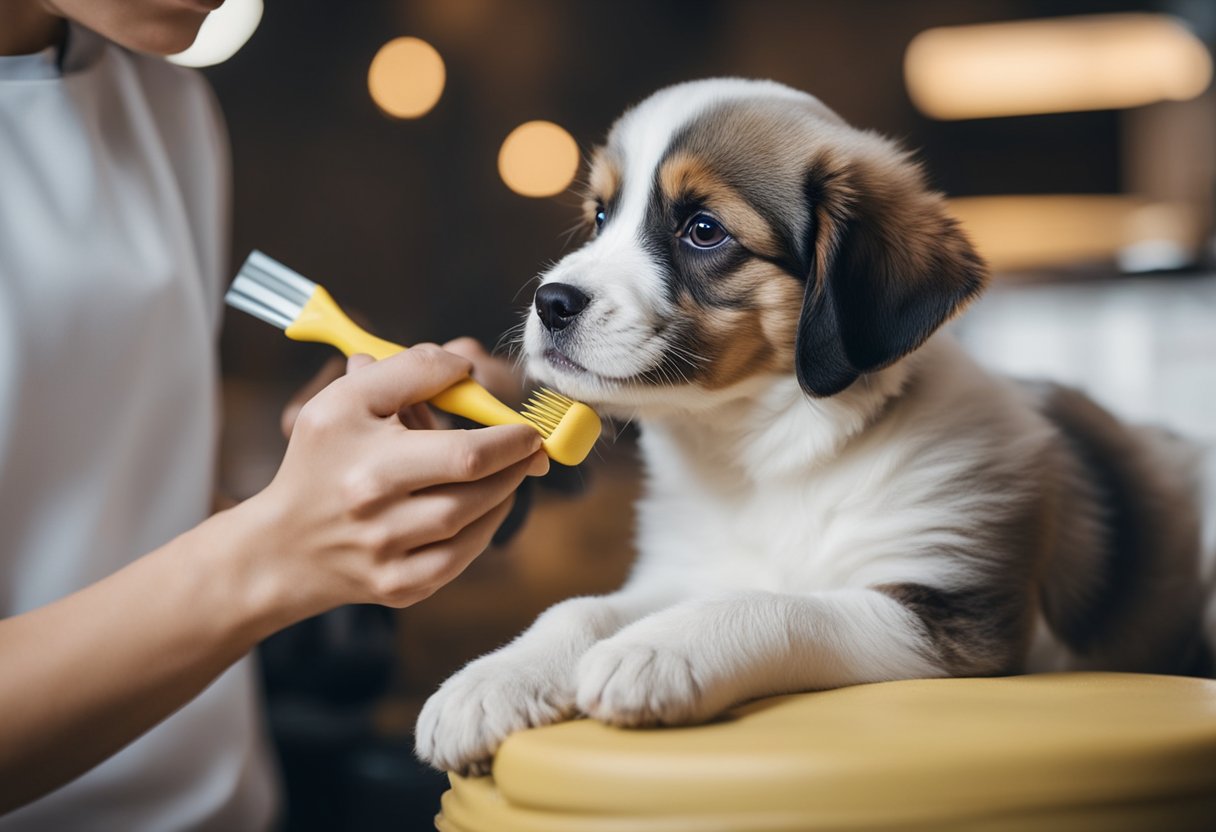
At what age is it appropriate to start grooming a puppy?
It is recommended to start grooming your puppy as early as possible to help them get used to the process. According to Woof Train, puppies can start getting used to grooming at around 12 weeks old. This is the time when they have received all their vaccinations and can socialize with other dogs.
What are the grooming age requirements for young dogs?
There are no specific age requirements for grooming young dogs. However, it is important to ensure that your puppy has received all their vaccinations before taking them to the groomer. Additionally, it is recommended to start with basic grooming tasks such as brushing their fur and teeth, cleaning their ears, and trimming their nails.
How can you tell if your puppy is ready for their first grooming session?
You can tell if your puppy is ready for their first grooming session by observing their behavior. If they are calm and relaxed during grooming tasks such as brushing and trimming their nails, then they are likely ready for their first professional grooming session. However, if they are anxious or scared during these tasks, it may be best to wait a little longer before taking them to a groomer.
What preparations should be made before taking a puppy to be groomed?
Before taking your puppy to be groomed, it is important to ensure that they have received all their vaccinations and are in good health. You should also prepare your puppy for the grooming experience by introducing them to grooming tools such as brushes and combs. Additionally, you can help your puppy become familiar with the grooming environment by taking them for short visits to the groomer’s shop.
Is it safe to groom a puppy at 3 or 4 months of age?
Yes, it is safe to groom a puppy at 3 or 4 months of age as long as they have received all their vaccinations and are in good health. However, it is important to start with basic grooming tasks such as brushing their fur and teeth, cleaning their ears, and trimming their nails. You can gradually introduce more complex grooming tasks as your puppy becomes more comfortable with the process.
What are the risks of grooming a puppy too early?
Grooming a puppy too early can be risky as it can cause unnecessary stress and anxiety for your puppy. Additionally, if your puppy has not received all their vaccinations, they may be at risk of contracting diseases from other dogs at the grooming salon. Therefore, it is important to wait until your puppy is at least 12 weeks old and has received all their vaccinations before taking them to a professional groomer.
